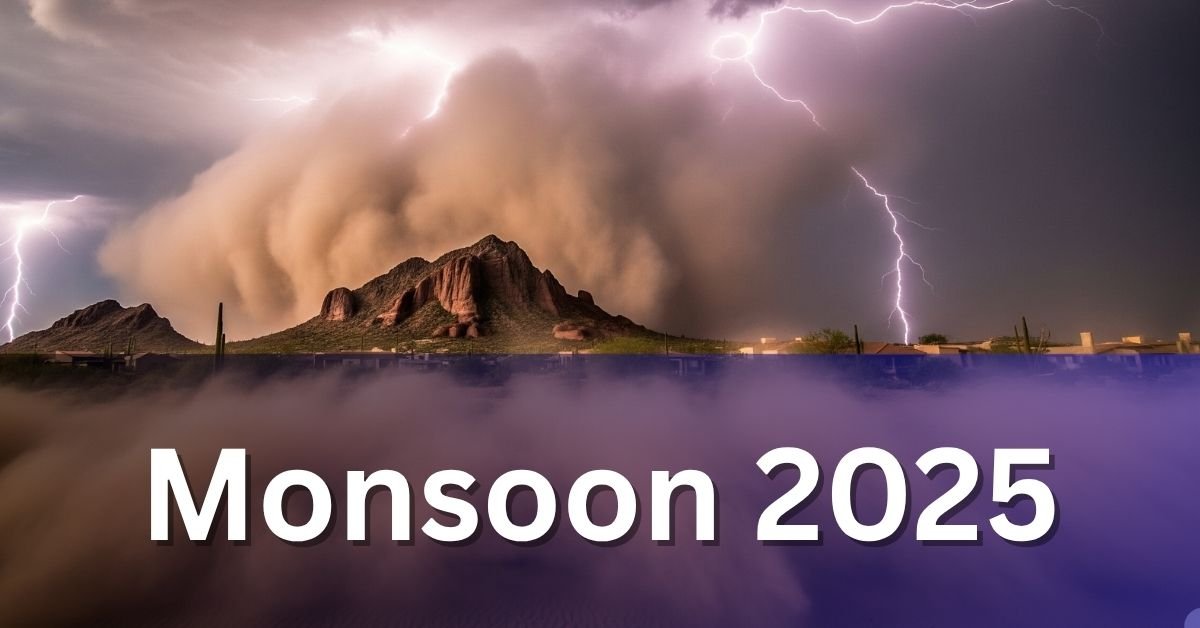Get Ready, Phoenix! A Newcomer’s Guide to Arizona’s Monsoon Season
Welcome to the Valley of the Sun! If you’ve recently moved to the greater Phoenix area or are considering a move, you’re likely drawn by the promise of endless sunshine. But come mid-June, you’ll discover that Arizona has a wild side to its weather: the summer monsoon. Don’t be intimidated! This annual weather phenomenon is a spectacular and vital part of life in the Sonoran Desert. This guide will walk you through what to expect, how to stay safe, and even how to enjoy this dramatic season.
What Exactly is the Monsoon?
The word “monsoon” comes from the Arabic word “mausim,” which means “season.” And that’s precisely what it is—a seasonal shift in wind patterns. From roughly June 15th to September 30th, the prevailing winds shift from their typical westerly direction and begin to pull in moisture from the Gulf of California and the Pacific Ocean. When this humid air collides with the intense summer heat of the desert, it creates the perfect recipe for a variety of weather events.
What to Expect: The Sights and Sounds of the Monsoon
The monsoon season isn’t a constant downpour. Instead, it’s characterized by a build-up of humidity, often followed by sudden and intense storms, usually in the late afternoon or evening. Here’s what you can expect:
- Thunderstorms: These are not your average rain showers. Monsoon thunderstorms can be powerful, bringing torrential rain, frequent lightning, and strong winds.
- Haboobs (Dust Storms): One of the most dramatic spectacles of the monsoon is the haboob. These are massive, towering walls of dust that sweep across the desert, often preceding a thunderstorm. Visibility can drop to near zero in a matter of minutes.
- Heavy Rainfall and Flash Flooding: The dry, hard-packed desert soil doesn’t absorb water quickly. This means that even a short burst of heavy rain can lead to flash floods, turning dry washes into raging rivers and quickly inundating streets.
- High Winds: Powerful downdrafts from thunderstorms, known as microbursts, can produce winds exceeding 60 miles per hour. These winds can cause significant damage to trees and property.
- Lightning: Arizona’s monsoon storms are prolific lightning producers, which can be both beautiful and dangerous, often sparking wildfires.
Staying Safe and Prepared: Your Monsoon Checklist
Living in the desert during monsoon season requires a little preparation. Here are some essential tips for new residents:
At Home:
- Secure Your Yard: Strong winds can turn patio furniture, trampolines, and other loose items into dangerous projectiles. Secure them or bring them indoors when a storm is forecast.
- Maintain Your Landscaping: Trim trees and remove any dead branches that could break off in high winds.
- Check Your Roof and Gutters: Ensure your roof is in good repair and that your gutters and downspouts are clear of debris to prevent water damage.
- Prepare for Power Outages: Have a well-stocked emergency kit with flashlights, batteries, water, non-perishable food, and a first-aid kit.
On the Road:
- “Pull Aside, Stay Alive”: This is the golden rule for driving in a haboob. If you’re caught in a dust storm, pull your vehicle as far off the road as possible, turn off your lights (so other drivers don’t follow you), set your parking brake, and take your foot off the brake pedal. Wait for the storm to pass.
- “Turn Around, Don’t Drown”: Never attempt to drive through a flooded roadway. It’s impossible to know how deep the water is or if the road beneath has been washed away.
- Slow Down in the Rain: When it first starts to rain, the accumulated oil and dust on the roads can make them extremely slick. Reduce your speed and increase your following distance.
Fun Facts About the Arizona Monsoon
- A Welcome Relief: The rain and cloud cover from monsoon storms provide a much-needed break from the intense summer heat.
- The Smell of Rain: The distinctive, earthy smell after a desert rainstorm comes from the creosote bush, a plant that releases its fragrant oils when wet.
- A Tale of Two Monsoons: No two monsoon seasons are alike. Phoenix’s wettest monsoon on record was in 1984, with over 9.5 inches of rain. In contrast, 2020 saw only 1 inch.
The 2025 Monsoon Forecast
For the 2025 monsoon season, the Climate Prediction Center is forecasting a tendency for above-normal precipitation for much of Arizona, including the Phoenix area. While this is welcome news after some drier years, it also means it’s more important than ever to be prepared for the possibility of strong storms and heavy rainfall.
The Arizona monsoon is a powerful and awe-inspiring force of nature. By understanding what to expect and taking the necessary precautions, you can safely enjoy one of the most unique and exciting aspects of life in the Sonoran Desert. So, get your emergency kit ready, secure your patio chairs, and get ready to witness the spectacular show!


